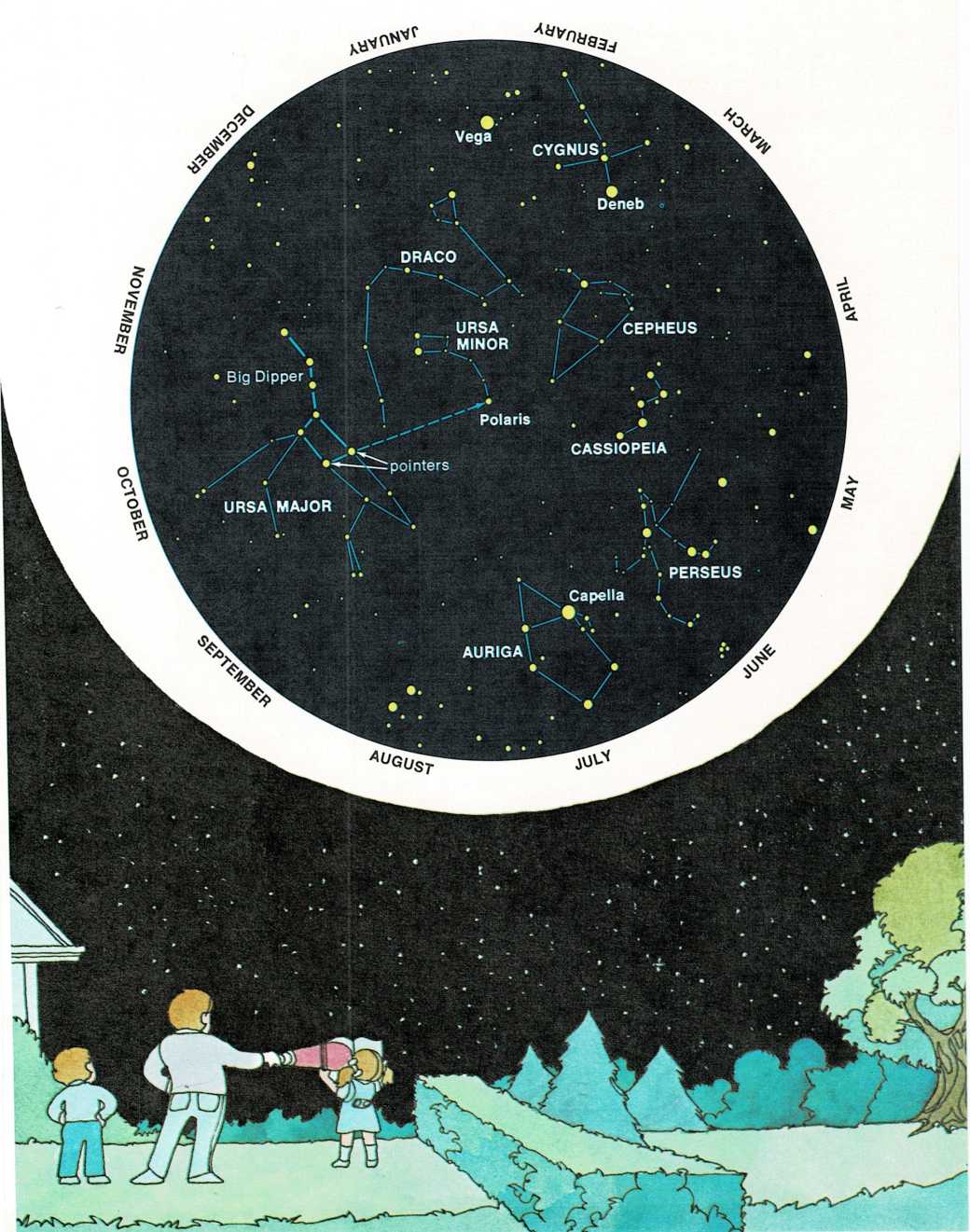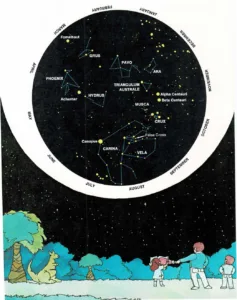Finding constellations
Do you live in the Northern Hemisphere—say, in the United States,
Canada, Great Britain, or Japan? Then, during most of the year you will
be able to see the constellations shown on the star chart on page 271.
Do you live in the Southern Hemisphere—in Australia, New Zealand, or
South Africa? If so, during most of the year you will be able to see the
constellations shown on the star chart on page 273. And, if you live in
the southern United States, Hawaii, or northern Australia, you’ll
sometimes be able to see some of the constellations on both star charts.
On the charts, the stars in each constellation are joined together with
lines to show the shape of the constellation. If you know the shape of a
constellation, and where to look for it in the sky, you can usually find
it without much trouble.
To use the charts, take this book outdoors at about nine o’clock, on a
clear, moonless night. Stand where you can see as much of the sky as
possible. If you live in the Northeim Hemisphere, face north. In the
Southern Hemisphere, face south.
To see the chart, you’ll need a flashlight. But cover the light with red
cellophane. Otherwise, the light will dazzle your eyes and make it hard
for you to see the stars when you look up at the sky.
The constellations move into a different part of the sky each month. So,
around the outside of each chart are the names of the months. Hold the
book so that the name of the right month is pointed at your chest. Then
the chart will show where the constellations will be when you look up at
the sky.

For example, in the Northern Hemisphere, in May, the group of stars
Americans call the Big Dipper and the British call the Plough will be
straight ahead of you, high in the sky. In the Southern Hemisphere, in
June, the constellation called Crux will be straight ahead of you, close
to the horizon.
On the charts, each constellation has its Latin name. Some of the names
are based on what people thousands of years ago thought the
constellation looked like. For example, in the Northern Hemisphere
there’s a constellation called Draco. That means “Dragon.” Ursa Major
means “Great Bear.” Ursa Minor means “Little Bear,” though we usually
call this constellation the Little Dipper. Cygnus means “Swan” and
Auriga is “the charioteer.” Cepheus was a king, and Cassiopeia was a
queen. Perseus was a storybook hero who killed a monster and saved a
princess.
In the Southern Hemisphere, there is a famous constellation called Crux,
which means “cross.” It is better known as the Southern Cross.
Triangulum Australe means “Southern Triangle.” Musca is “Fly,” Pavo is
“Peacock,” and Grus is “Crane.” Vela is the “sail” of a ship, and Carina
is the ship’s “keel,” or bottom.
The charts also show a few of the brightest stars, such as Vega and
Canopus.
If you live in or near a city, you may not be able to see all of the
stars or constellations because of the city lights. But you will nearly
always be able to see the brightest stars and some of the
constellations.


